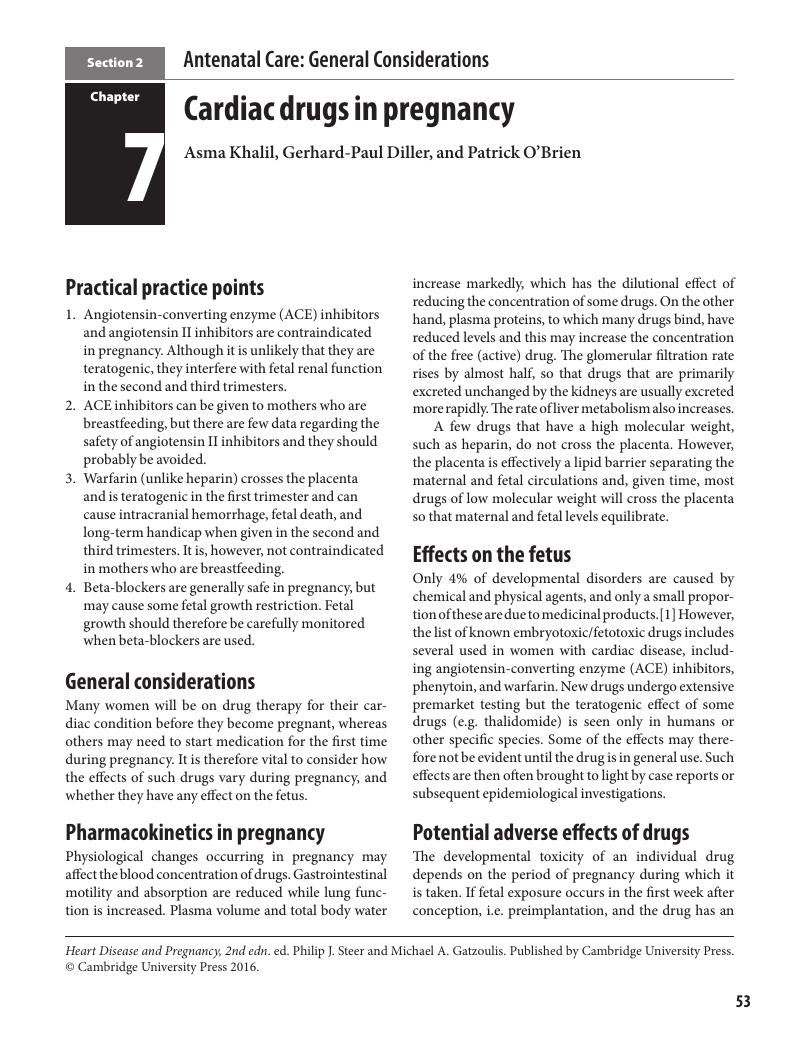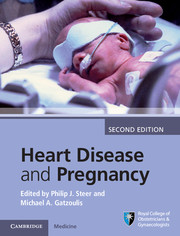Book contents
- Heart Disease and Pregnancy
- Heart Disease and Pregnancy
- Copyright page
- Contents
- List of contributors
- Preface
- Consensus statements
- Section 1 Pregnancy Counseling and Contraception
- Section 2 Antenatal Care: General Considerations
- Chapter 3 Cardiovascular changes in normal pregnancy
- Chapter 4 Antenatal care of women with cardiac disease: An obstetric perspective
- Chapter 5 Antenatal care of women with cardiac disease: A cardiac perspective
- Chapter 6 Cardiac monitoring during pregnancy
- Chapter 7 Cardiac drugs in pregnancy
- Chapter 8 Surgical and catheter intervention during pregnancy in women with heart disease
- Section 3 Antenatal Care: Fetal Considerations
- Section 4 Antenatal Care: Specific Maternal Conditions
- Section 5 Intrapartum Care
- Section 6 Postpartum Care
- Appendix A New York Heart Association classification of cardiovascular disease
- Appendix B Antenatal care pathway
- Index
- Plate section
- References
Chapter 7 - Cardiac drugs in pregnancy
from Section 2 - Antenatal Care: General Considerations
Published online by Cambridge University Press: 05 March 2016
- Heart Disease and Pregnancy
- Heart Disease and Pregnancy
- Copyright page
- Contents
- List of contributors
- Preface
- Consensus statements
- Section 1 Pregnancy Counseling and Contraception
- Section 2 Antenatal Care: General Considerations
- Chapter 3 Cardiovascular changes in normal pregnancy
- Chapter 4 Antenatal care of women with cardiac disease: An obstetric perspective
- Chapter 5 Antenatal care of women with cardiac disease: A cardiac perspective
- Chapter 6 Cardiac monitoring during pregnancy
- Chapter 7 Cardiac drugs in pregnancy
- Chapter 8 Surgical and catheter intervention during pregnancy in women with heart disease
- Section 3 Antenatal Care: Fetal Considerations
- Section 4 Antenatal Care: Specific Maternal Conditions
- Section 5 Intrapartum Care
- Section 6 Postpartum Care
- Appendix A New York Heart Association classification of cardiovascular disease
- Appendix B Antenatal care pathway
- Index
- Plate section
- References
Summary

- Type
- Chapter
- Information
- Heart Disease and Pregnancy , pp. 53 - 64Publisher: Cambridge University PressPrint publication year: 2016



